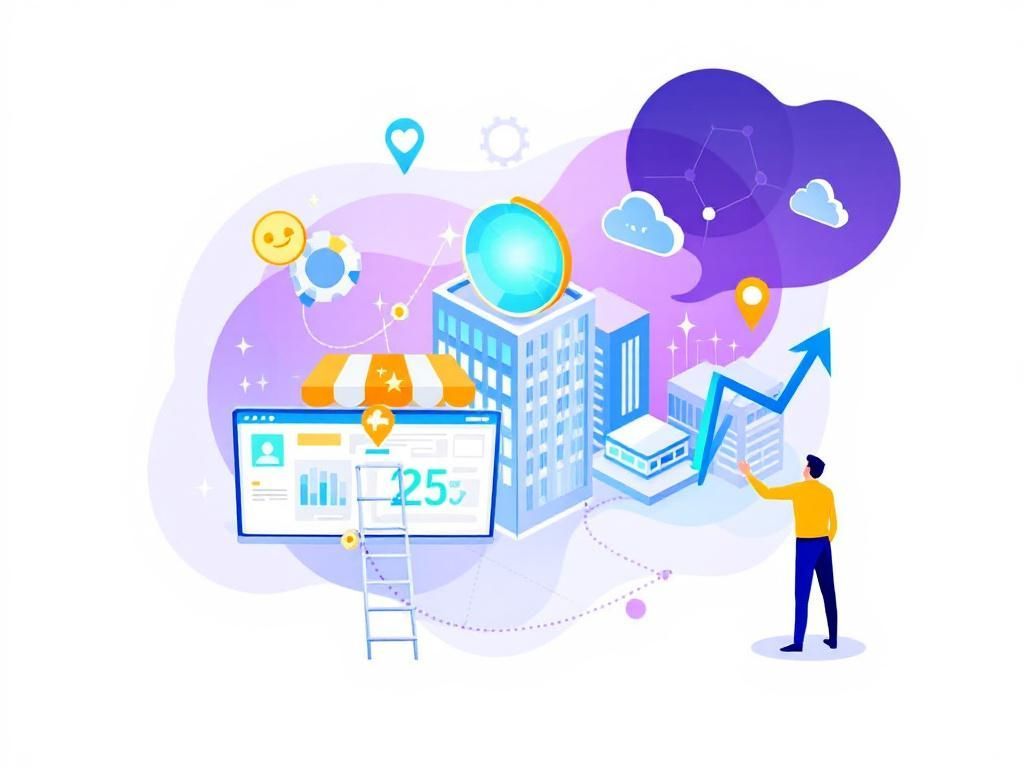2025 IT Roadmap: Essential Guide for CIOs
Discover the essential 2025 IT roadmap to guide CIOs in strategic planning, technology adoption, and innovation for effective organizational growth.

The rapidly evolving technological landscape demands that Chief Information Officers (CIOs) stay ahead of the curve. As we approach 2025, understanding the strategic framework for IT management becomes increasingly crucial. This article serves as a comprehensive roadmap, outlining key trends, technologies, and strategies that will define the IT landscape in the coming years.
Table of Contents
Understanding the IT Landscape of 2025
By 2025, organizations will face an unprecedented level of complexity in IT systems, driven by several factors:
- Increased reliance on cloud computing
- Emergence of AI and machine learning
- Growing cybersecurity threats
- Regulatory compliance challenges
- Shift towards remote and hybrid work environments
The Role of the CIO
For CIOs, the need to manage these complexities while driving innovation and efficiency is paramount. Here are some primary responsibilities that will shape the role of CIOs in 2025:
- Aligning IT strategy with business goals
- Ensuring data security and compliance
- Fostering a culture of innovation
- Leveraging new technologies to enhance operational efficiency
- Managing IT talent and skills development
Key Technologies to Watch
Several technologies are expected to play pivotal roles in IT strategy by 2025. Understanding these technologies will help CIOs make informed decisions:
1. Artificial Intelligence and Machine Learning
AI and machine learning will become integral to business processes, enabling organizations to analyze vast amounts of data for actionable insights.
2. Cloud Computing
The shift to cloud infrastructure will continue, with organizations adopting hybrid and multi-cloud strategies to enhance flexibility and scalability.
3. Cybersecurity Innovations
As cyber threats evolve, advanced security measures, including zero trust architectures and AI-driven security operations, will be essential.
4. Internet of Things (IoT)
The IoT will enable smarter operations and real-time data collection, driving efficiency across various industries.
5. Edge Computing
As data generation increases, edge computing will help process data closer to the source, reducing latency and bandwidth costs.
Strategic Areas of Focus
To navigate the complexities of 2025, CIOs should focus on the following strategic areas:
1. Digital Transformation
Organizations must embrace digital transformation to remain competitive. This involves rethinking business models, processes, and customer engagements.
2. Data Governance
As data becomes a critical asset, establishing robust data governance frameworks will be necessary for compliance and strategic use.
3. Agile Methodologies
Implementing agile methodologies can enhance responsiveness to market changes and foster a culture of rapid innovation.
Building a Skilled Workforce
The success of any IT strategy hinges on the skills of the workforce. CIOs should prioritize the following initiatives:
- Investing in continuous education and training programs
- Building diverse teams to drive innovation
- Utilizing collaborative tools to enhance teamwork
Training Programs to Consider
| Program | Focus Area | Duration |
|---|---|---|
| Cloud Computing Certification | Cloud Infrastructure | 6 Months |
| Data Science Bootcamp | Data Analytics | 3 Months |
| Cybersecurity Essentials | Data Protection | 4 Months |
Executing the IT Roadmap
Implementing the roadmap involves several essential steps:
1. Assess Current IT Capabilities
Understanding the current state of IT systems and processes is critical. Conduct a thorough assessment to identify strengths and weaknesses.
2. Define Clear Objectives
Set specific, measurable goals aligned with the organization’s broader business strategy.
3. Engage Stakeholders
Involve various stakeholders in the planning process to ensure buy-in and alignment with organizational objectives.
4. Monitor Progress
Establish key performance indicators (KPIs) to evaluate the success of the IT roadmap and make necessary adjustments.
Conclusion
As technology continues to evolve, the role of the CIO will be more critical than ever. By focusing on the key trends, technologies, and strategies outlined in this roadmap, CIOs can lead their organizations into a successful and innovative future.
FAQ
What is an IT roadmap?
An IT roadmap is a strategic plan that outlines an organization’s technology initiatives, goals, and timelines to align IT with business objectives.
Why is an IT roadmap important for CIOs?
An IT roadmap is crucial for CIOs as it provides a clear direction for technology investments, helps prioritize projects, and ensures that IT supports overall business strategy.
What key components should be included in a 2025 IT roadmap?
A 2025 IT roadmap should include technology trends, project timelines, budget considerations, risk assessments, and alignment with business goals.
How often should an IT roadmap be updated?
An IT roadmap should be reviewed and updated at least annually, or more frequently if there are significant changes in technology or business strategy.
What role does stakeholder engagement play in developing an IT roadmap?
Stakeholder engagement is vital in developing an IT roadmap as it ensures that the needs and priorities of different departments are considered, leading to better alignment and support.
How can CIOs measure the success of their IT roadmap?
CIOs can measure the success of their IT roadmap by tracking key performance indicators (KPIs), project completion rates, budget adherence, and overall business impact.



